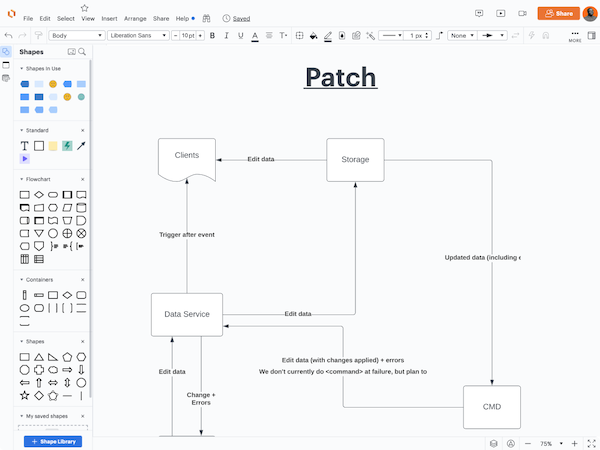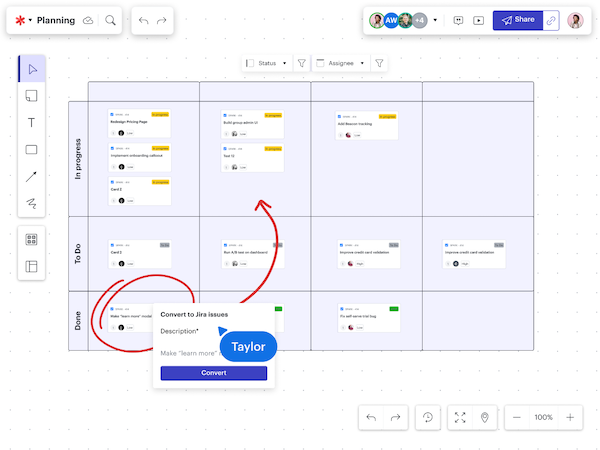Learn about purchasing for teams

Guest Post
Document. Document. Document. This was the M.O. for most developers for years before the Agile Manifesto revolutionized the industry. And for good reason. Documentation is essential for engineering teams to ensure alignment, avoid duplicative efforts, and facilitate development across distributed teams.
But it can also be inefficient, time-consuming, and high-maintenance.
So when the Agile Manifesto introduced a new paradigm valuing “working software over comprehensive documentation,” many teams embraced it.
The problem is that too many teams have interpreted the Agile Manifesto value as meaning they don’t need to create any documentation, which simply isn’t true. Teams still need documentation, but they also need a modern, efficient, and agile way to create, maintain, and share it.
Redefining agile documentation
An agile approach to documentation can’t and shouldn’t look like the traditional approach to documentation. Teams shouldn’t pursue creating comprehensive documentation as a necessity before work can begin. That approach doesn’t leave room for learning and adaptation (and can even lead to outcomes that don’t meet customer needs). Instead, agile documentation is documentation that is iterative, dynamic, and collaborative.
“Our intention was not to imply that teams shouldn’t produce any documentation,” explains James Grenning, one of the original authors of the Agile Manifesto. “Documentation can be incredibly useful for creating a shared understanding across teams and stakeholders. The key is recognizing that documentation needs vary based on factors like team size, distribution, regulation, or industry.”
For example, agile documentation can include visual templates and diagrams shared through the cloud, such as:
The goal of agile documentation isn’t to provide a list of requirements up front but instead to foster alignment and clarify complexity. With agile documentation, teams can:
- Work faster and more efficiently
- Increase time to market by templatizing repeatable processes
- Streamline onboarding for new team members and stakeholders
- Better contextualize information
Tips for streamlining agile documentation
Agile documentation still takes intentional effort. Here’s how you can streamline the process without sacrificing other agile values.
Document as you go
Documentation doesn’t need to be a separate task or deliverable to complete. During every meeting or asynchronous interaction, you can organically create documentation by using a virtual whiteboard to take notes, create visuals, and complete activities.
For example, if you are deciding what to build next, your team might brainstorm feature ideas and then rank them in terms of customer value. If you do this all on a virtual whiteboard, teams can return to those feature ideas later and refer back to why the current feature was chosen.
By integrating documentation tasks into the agile workflow, teams save time and increase clarity for stakeholders.
Make documentation visual
Text-heavy documentation is cumbersome to create and difficult to read and navigate. Instead, look for opportunities to make your documentation process more visual. Visualizing information—such as ideas, timelines, progress, and technical systems—makes communication faster, clearer, and more accessible.
“Visuals are a great way to start exploring ideas and get people on the same page,” Grenning explains. “Start with a high-level vision of where you're going. You can think of this as a map. When working on something from scratch, start with a document that describes the lay of the land, communicates conventions, and helps you and your team get around the system.”

Visual documentation accelerates understanding and helps teams get on the same page faster.
Pro tip: Invite the right people to participate
Don’t simply create documentation and then share it with others. Instead, invite relevant parties to create it alongside you from the beginning. This practice allows the process to be more collaborative and can spark innovation and new ideas.
Automate where possible
Look for tools that can help you build and maintain your technical documentation with less effort.
Modern visual collaboration solutions like Lucid offer advanced features to streamline documentation. These solutions can automatically generate various diagrams such as flowcharts, ERDs, org charts, and UML diagrams directly from your data. Some even incorporate AI assistance to help build and optimize diagrams. By using automation, teams can significantly reduce errors commonly associated with the manual creation of documentation.
Another advantage of these platforms is the ability to link your data sources directly to your documents. This integration ensures your documentation stays up to date automatically, without requiring additional effort.
What's more, advanced visual collaboration solutions integrate with project management tools like Jira and Azure DevOps. This integration allows teams to seamlessly share visuals between their chosen platforms, saving time and effort in keeping information synchronized across their environment.

Advanced visual collaboration solutions give teams a visual space to plan and collaborate. Then, automatically sync action items into tools like Jira or Azure DevOps to stay aligned.
Using templates offers a quick starting point and can streamline your documentation process, allowing you to focus on content rather than layout. Plus, templates promote consistency across your documents. They're particularly valuable for complex events like big room planning.
Pro tip: Turn the work you are already doing into documentation.
“The cheapest document is the one you don’t bother writing,” Grenning says.
So, before creating new documents, consider if any of the work you’re already doing can act as the documentation itself. For instance, if you are testing code, write automated tests to validate that the code behaves a certain way. With test-driven development, the test itself becomes the documentation of your code’s behavior—pass or fail—all without you having to create more work.
House documentation in a single place
When documentation is spread across multiple platforms and owners, it is hard to track, find, and update. This can make it difficult for your team to stay aligned and costs valuable time tracking down information.
In fact, according to research by Lucid, workers spend an average of five hours a week just looking for project information, and 31% feel that "knowing where to go to get project resources" is an important piece missing from their project processes.
Documentation will become more useful as it’s accessible to others, so centralize all of your documentation in one single source of truth that is available to all necessary team members.
Documentation is good. Agile documentation is better.
It’s time to retire the myth of documentation as the agile boogeyman.
Documentation is not only a necessary priority in agile development but can also be a significant asset. The key is to approach it with an agile mindset.
As you evaluate your documentation processes, look for ways to automate, iterate, and collaborate to enhance alignment, streamline workflows, and create value-driven documentation that supports teams and stakeholders alike.
Find out how to amplify agile values
To learn more about upholding agile values in today's highly distributed, remote, and hybrid teams, watch How to Amplify Agile Values in Modern Workforces. Watch this video to get practical tips from two experienced agilists who are ready to share their insights about sustaining agility in this era.
About the author
Lucid offers a visual collaboration platform that helps teams see and build the future. With its products—Lucidspark for virtual whiteboarding, Lucidspark for intelligent diagramming, and Lucidscale for cloud visualization—Lucid empowers teams to take plans from initial ideas to successful delivery. Top businesses use Lucid's products all around the world, including customers such as Google, GE, and NBC Universal, and ninety-nine percent of the Fortune 500.










